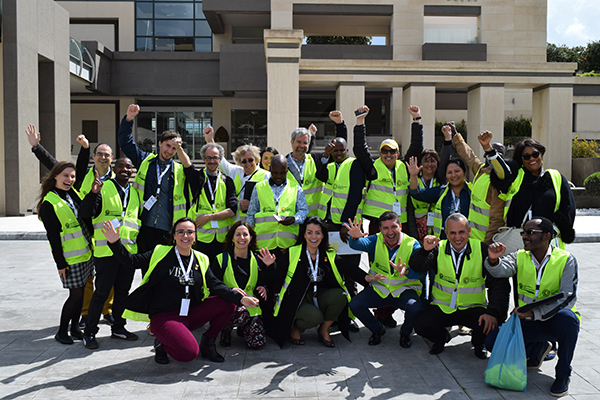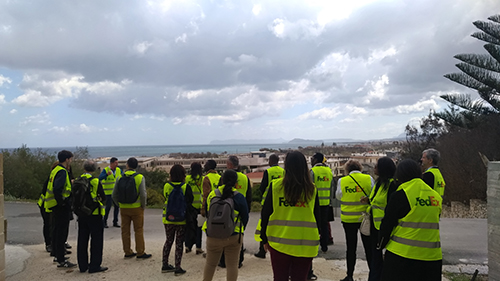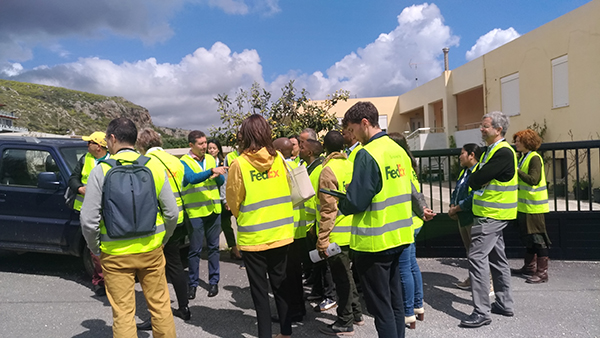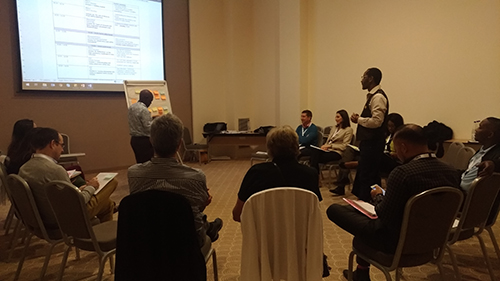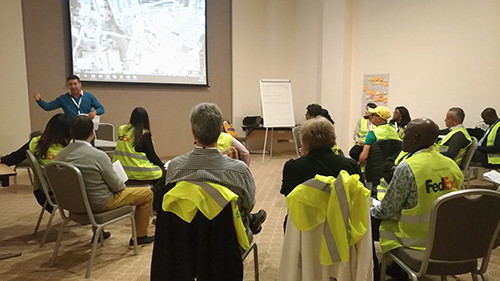Photo credit: Global Alliance of NGO's for Road Safety 2019
SR4S update from the Sixth Global Meeting – Global Alliance of NGO’s for Road Safety in Crete, Greece (April 2019)
On Tuesday 9 April, Rafaela Machado (Star Rating for Schools Programme Coordinator, iRAP) and Julio Urzua (Director of Latin America and the Caribbean, iRAP) helped facilitate the training ‘Introduction to road safety data and school area assessment’ with Patrick Kinyanjui from the Alliance. The session was attended by 18 Alliance members.
The full day workshop covered:
- The role of NGO’s in Road Safety Advocacy;
- Quantitative x qualitative research;
- A field activity to demonstrate a road safety inspection around a school in Crete (Coordinated by Alliance/Make Roads Safe Hellas/iRAP);
- Reflections on the field activity and challenges to data collection;
- Countermeasures recommended for the sites assessed.
Based on the experience of pilot assessments with SR4S, iRAP highlighted the 5 most frequent road infrastructure attributes to influence road safety for pedestrians around schools:
- Speeds;
- Speed management;
- Sidewalks;
- Pedestrian crossing;
- Delineation.
There is considerable evidence on the relationship between speed and the likelihood and severity of a crash. The effect of traffic speed is especially pronounced for pedestrians, who have little chance of survival when hit by a vehicle at high speed. The human body is not designed to accommodate high speed impacts; therefore, speeds should be adjusted to allow for driver reaction time and reduce the likelihood of fatalities in the event of a pedestrian crash. The project http://www.meetgraham.com.au/ illustrates more on the vulnerability of the human body.
A safe posted speed limit may not be enough to prevent vehicles from speeding up and putting pedestrians at risk. In locations where a high number of pedestrians are expected, it is recommended to adopt complimentary speed management strategies, such as improved enforcement and traffic calming countermeasures, to ensure compliance of drivers with safe speeds.
It is also important to ensure kids will have safe pedestrian facilities to reach out to the school. Streets must include continuous and homogeneous sidewalks, with a good surface and without obstacles. Pedestrians who are forced to walk along the road, are exposed to a high risk of being hit by motorised vehicles. Similarly, pedestrians must have safe crossing opportunities. Crossing facilities should offer as direct a path as possible and support facilities such as lights, signage and a crossing supervisor will help to ensure vehicles yield.
Finally, all road users must receive the right messages from the environment on how to behave and interact with each other. This includes appropriate signs and markings to guide drivers along the road, especially at intersections, and identify pedestrian and bicycle flow, to reduce the risk of conflicts with motorised vehicles.
Simple and cost-effective solutions on these attributes can lead to significant improvements on the star ratings of school zones.

